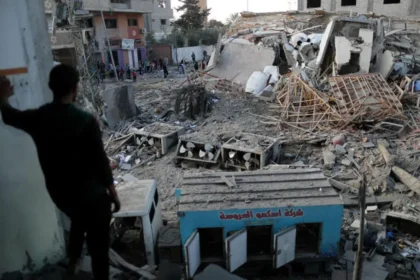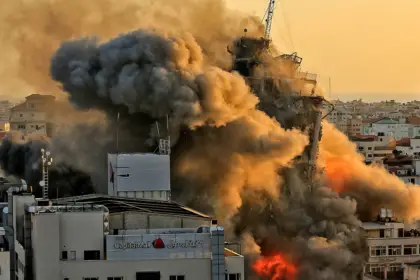The Complex History of Israel-Palestine Conflict: Why Do They Fight?
The Israel-Palestine conflict is a long-standing and deeply rooted issue that has gripped the world’s attention for decades. This conflict has resulted in numerous wars, thousands of casualties, and the displacement of millions of people. In this article, we will delve into the history of the conflict and explore the key reasons why Israel and Palestine continue to engage in hostilities.

1. Historical Roots:
The conflict traces its origins to the early 20th century when Britain issued the Balfour Declaration in 1917, which supported the establishment of a “national home for the Jewish people” in Palestine. This declaration laid the foundation for tensions that persist to this day.
2. The 1948 Nakba:
The year 1948 witnessed the establishment of the State of Israel, an event celebrated by Israelis but remembered as the Nakba, or “catastrophe,” by Palestinians. The conflict that followed resulted in the displacement of hundreds of thousands of Palestinians, many of whom still live as refugees today.
![Palestinians carry their possessions on their heads as they flee from a village in Galilee about five months after the creation of the state of Israel in 1948 [File: Reuters]](http://allupdatenews.com/wp-content/uploads/2023/10/Untitled-2-3-1024x576.webp)
3. Occupation and Settlements:

4. The Issue of Jerusalem:

The city of Jerusalem holds immense religious and cultural significance for both Israelis and Palestinians. The question of its status as Israel’s capital and the Palestinian aspiration for East Jerusalem as their capital have been central to the conflict.
5. Refugees:
The Palestinian refugee crisis, stemming from the events of 1948 and subsequent conflicts, has resulted in millions of Palestinians living in refugee camps across the region. The right of return for these refugees remains a contentious issue.
6. Failed Peace Efforts:
Over the years, various peace efforts, such as the Oslo Accords, have been made to find a resolution to the conflict. However, these initiatives have often faltered, leaving both sides disillusioned.
7. Regional and International Involvement:
The conflict has attracted the attention and involvement of various regional and international powers, adding complexity to the situation. The U.S., in particular, has played a significant role in mediating peace talks.

8. Radical Groups and Militancy:
Hamas, a Palestinian militant organization, rejects the existence of Israel and has been involved in conflicts with Israel. The presence of such groups further complicates peace negotiations.
9. Socio-Political Changes:
Recent developments in Israeli politics, including the formation of right-wing governments and shifts in U.S. policy, have contributed to escalating tensions. These changes have led to a perception of a weaker Israel, prompting militant actions.

10. Desperation and Despair:
Many Palestinians in the occupied territories live in dire conditions, with limited opportunities and resources. This desperation, coupled with political frustrations, has fueled resistance and conflict.
Conclusion:
The Israel-Palestine conflict is a complex and multifaceted issue deeply ingrained in history, politics, and regional dynamics. The reasons for the ongoing conflict are numerous, and finding a sustainable solution remains a significant challenge. To achieve lasting peace, a comprehensive understanding of the historical, political, and socio-economic factors at play is essential. International diplomacy, empathy, and a commitment to human rights are crucial in addressing the root causes of this enduring conflict.
Crisis in Gaza Prompts Concern for Civilians’ Safety: Egypt’s Role in a Difficult Situation
Crisis in Gaza Prompts Concern for Civilians' Safety: Egypt's Role in a…
Israel has boomed Gaza’s border crossing with egypt
Israel has boomed Gaza's border crossing with egypt The recent Israeli assault…
Kelvin Kiptum Shatters Marathon World Record at 2023 Chicago Marathon
Kelvin Kiptum Shatters Marathon World Record at 2023 Chicago Marathon In a…








